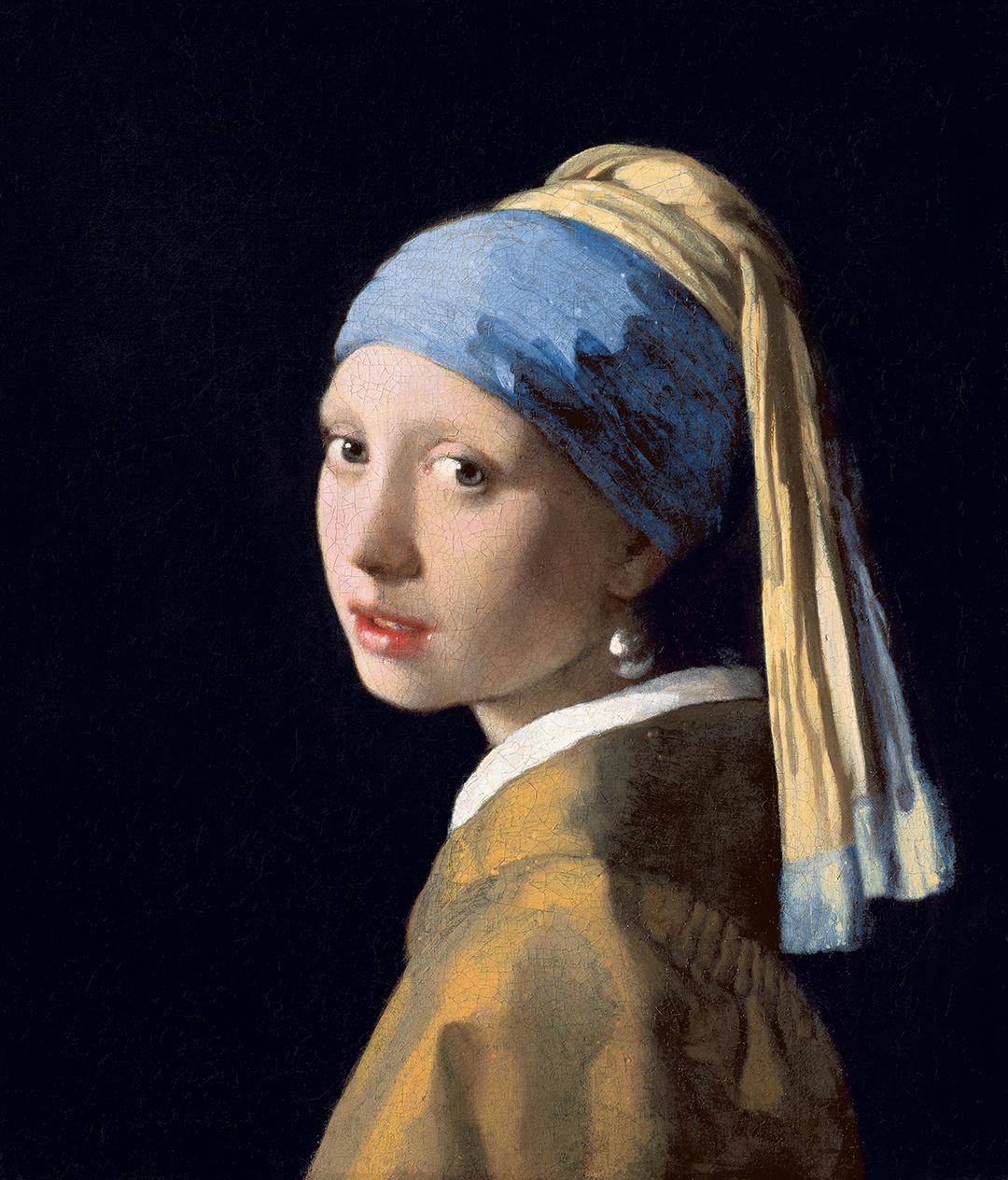
Griet, the young maid who inspired Johannes Vermeer’s painting, is portrayed by Scarlett Johansson in Girl with a Pearl Earring, directed by Peter Webber in 2003. The frame strives to recreate the original reference and its painterly atmosphere—with meticulous inaccuracy.
I believe it has something to do with age—the way we begin to reject an overwhelming percentage of the stimuli we receive each day. Visual, auditory, olfactory... perhaps only the tactile ones survive, and even then, just barely. Maybe it’s because, after fifty, we’re simply not touched as often as we once were.
Social media—Instagram, Facebook, and the rest—have become an inexhaustible source of visual input. Most of it is so crude that discarding it becomes automatic, a reflex we perform even when something worthwhile appears before our eyes.
I don’t even know if this is one of those cases, but the photograph—Scarlett Johansson as the famous Girl with a Pearl—triggered a mild sense of rejection in me. I didn’t like it, even though I like her—very much—in her own skin.
As the hours passed, that minor dissatisfaction—that faint disturbance in the balance of my visual imagination—kept returning, persistent and stubborn. Why did I find this reenactment of one of art history’s most unreadable gazes so uncomfortable?
I searched for the original... the memory of it was cloudy, vaguely superimposed over its recreation. To my surprise, the two had more in common than I had initially thought. And yet, I also confirmed that a vast gulf separates one image from the other.
Vermeer’s painting is titled Girl with a Turban (Meisje met de parel, in Dutch). If not the most iconic, it is certainly among his most recognized works. He painted it around 1665, during the Dutch Golden Age—a period of great artistic and economic prosperity in the Netherlands. It’s a very small piece. Clearly, Vermeer wasn’t thinking of museum halls when he conceived it: it measures less than forty-five centimeters high by thirty-nine wide. In fact, it’s not even a portrait—we don’t know who the model was—but rather a tronie: a study in human expression. A kind of virtuoso exercise in capturing subtle emotions—wonder, surprise—and even particular life stages, like youth or old age, or specific ethnic or social types. Among Vermeer and his contemporaries, tronies were popular as artistic studies and as items for sale. They weren’t bound by aristocratic or religious commissions, which allowed for greater freedom and creativity.

Painted by Johannes Vermeer around 1665, Girl with a Pearl Earring has been part of the Mauritshuis collection in The Hague since 1902. Arnoldus Andries des Tombe, a Dutch collector, purchased it in 1881 for a negligible sum: two florins and thirty cents, the equivalent of a modest dinner at the time. Though its condition may not have been ideal, Arnoldus knew exactly what he was buying. Fortunately for everyone —except, perhaps, for him— he donated it willingly and while still alive, shortly before his death, having no heirs.
I can’t quite find the words to describe that gaze—or what I feel when I try to hold it. It’s a moment of suspension, one that neither yields nor confronts. As she turns—perhaps startled by a whisper or a sudden thought—she doesn’t face us directly; she questions us instead, reads us, tries to decipher our intentions with a tenderness and detachment that is both calm and overwhelming. A gaze spacious enough to contain centuries of innocence and curiosity, and one that reveals a tightly held vulnerability—so quiet, it freezes you. Without drama, it sings a silent hymn to unexpected intimacy. It is the softest, most unnerving scrutiny I can remember.
Her gaze is the axis of the painting. Surrounded by black, turned over her shoulder, her face slightly tilted, she barely reacts. She doesn’t judge, doesn’t invade or yield, yet somehow she grants the moment immortality—driving uncertainty into your own eyes. It is that word we use so often without knowing what it really means: mystery. At first glance, her blue and gold turban and the oversized pearl hanging from her ear act as focal points in the composition. Then we begin to see the unrelenting triangle they form with the outer corner of her eye and her lower lip. It’s ironic that, despite the title referring to the turban—perhaps because of its exoticism—she’s commonly known as the girl with the pearl. But it seems to me that it’s the pearl—its weight, both physical and symbolic—that determines her tilted posture. Everything else, held together by masterful use of light and composition, is mere structure in service of that suspended instant.
Her vivid red lips convey no desire. They don’t seduce, despite their shine and slight parting. This is a phenomenal work—one that challenges immortality precisely like this, with that same gaze.
Vermeer died in 1675, after a modest, quiet life, leaving behind just 36 paintings. As often happens in the West, he was posthumously elevated to the status of great master. It was also inevitable that this piece would reach mass media, literature, television—and of course, film. That’s where Scarlett Johansson steps in, attempting to recreate this unsettling, devastating, almost unbearable gaze.
We’ll get to her in the next post.










Comments powered by Talkyard.